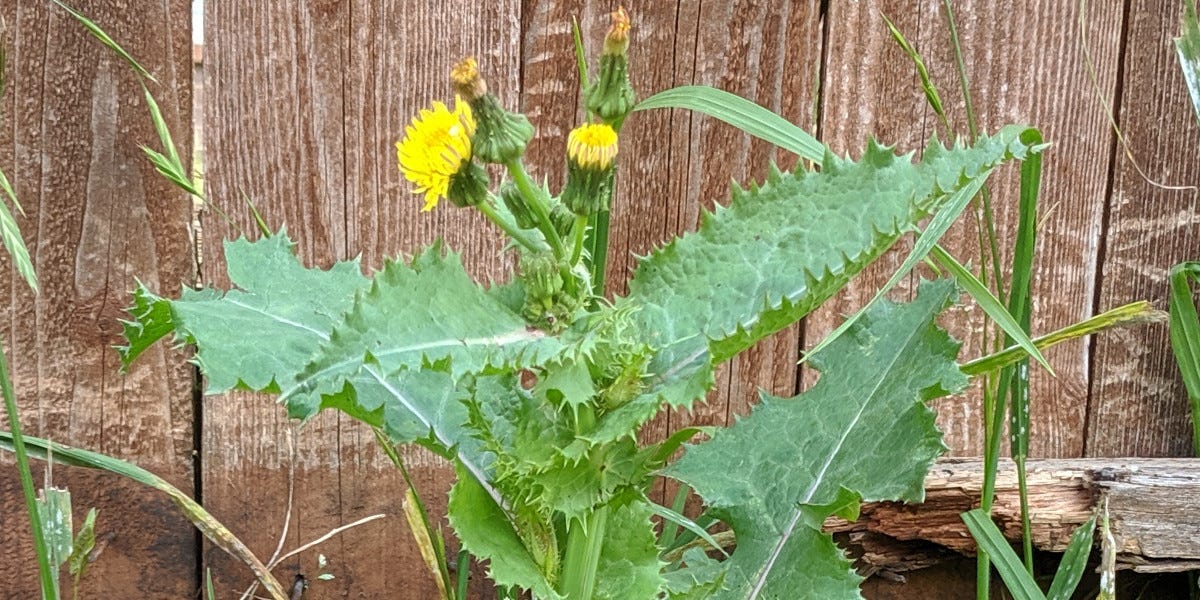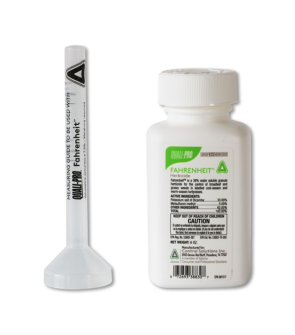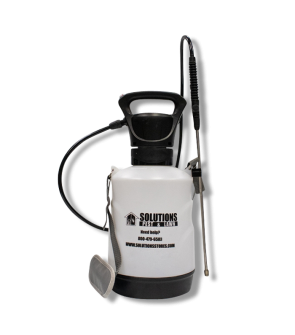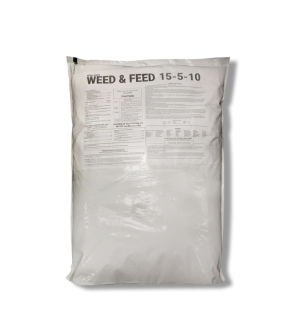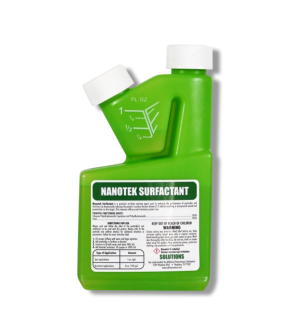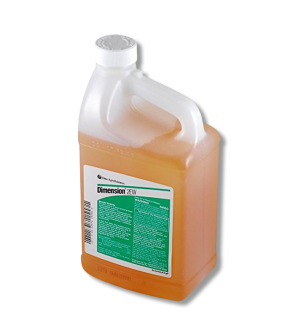Gain access to personalized product screening, the best pricing, rewards, and more!
Most Effective Products
Annual Sowthistle Control: How to Get Rid of Annual Sowthistles
This page is a general DIY guide for controlling annual sowthistles. Using the suggested products and methods, you can get control of annual sowthistles. Follow this professional article and use the recommended products, and we guarantee 100% control of annual sowthistles.
Annual sowthistle, also known by other names such as common sowthistle, sowthistle, smooth sowthistle, hare's lettuce, hare's colewort, hare's thistle, milk thistle, soft thistle, or milky tassel is a common broadleaf weed found in lawns, gardens, and agricultural fields worldwide. Because of their aggressive growth habit, they quickly colonize open areas, outcompeting desirable plants for nutrients, water, and sunlight.
On top of that, these weeds can survive in almost any soil type, even during drought conditions. And let's not forget, their prickly leaves and milk sap can potentially irritate some individuals. Some sowthistle populations have even become resistant to herbicides, making chemical control more difficult.
These weeds can reduce crop yields by outcompeting for essential nutrients and may also harbor pests such as aphids and nematodes. By staying on top of annual sowthistle control with the following tips and products in this article can save yourself a lot of headache down the road.
Identification
Before proceeding with a treatment program, you must be certain you are dealing with annual sowthistles. Careless identification can lead to using the wrong treatment methods, which can be a waste of time and money. The following features will explain what annual sowthistles look like:
- Annual sowthistle is a fast-growing winter or summer annual broadleaf weed that grows between 1 to 4 feet tall. Its stems are smooth, hairless, hollow between the joints, and secrete a milky white sap when damaged.
- The first leaves of annual sowthistles emerge in a basal rosette form and are rounded, oval to elongated in shape, and have wavy-toothed margins. Initially, the leaf tips are rounded, but as the plant develops, they become triangular or arrowhead-shaped. As the plant matures, the blue-green leaves become more elongated and deeply divided, maintaining the triangular or arrowhead-shaped tip. The leaf margins are lined with soft spines, giving them a prickly texture. The lower leaves can be up to 12 inches long, while the upper leaves are smaller, clasping the stem with clawlike basal lobes. Unlike other sowthistle species, annual sowthistle leaves grow in an alternate pattern along the upright, hollow stem. In contrast, perennial sowthistle leaves are broader and less deeply divided, with a more rounded or blunt tip. They tend to have coarser, irregularly toothed edges and often feature a slightly hairy underside, giving them a rougher texture.
- The flowers appear primarily in spring and summer but may bloom year-round in favorable conditions. Flowers are yellow, dandelion-like, and form in clusters at the tips of stems. Each flower head is 0.4 to 1 inch wide and consists of many narrow petals surrounded by several rows of green bracts. When closed, flower heads appear urn-shaped. These eventually become fluffy, white seed heads, although they are not perfectly round like dandelions.
- Seeds of annual sowthistles are oval to oblong in shape, brown to olive in color, and 0.08 to 0.16 inches long by 0.04 inches wide. Each seed is topped with a feathery white pappus pappus "fluff".
Use the description and image above to help identify annual sowthistles on your property. If you're uncertain, feel free to contact us. Email a photo of the weed or bring one to our store near your location, and we'll help confirm the identification and recommend treatment options.
Inspection
Once you confirm that you are dealing with annual sowthistles, you can move on to inspection. During this phase, you will locate areas where annual sowthistles are thriving and observe the conditions that allow this weed to thrive. This information will help you know where to focus your herbicide application.
Where to Inspect
Annual sowthistle can grow in a wide range of environments, but commonly grows in sites with fertile, moist soils in full sunlight.
They can be found in row crops, fallowland, pastures, lawns, gardens, landscapes, along roadsides, vacant lots, parks, orchards, vineyards, riverbanks, riparian areas, and other disturbed areas such as gravel pits and logged areas.
What to Look For
Unlike perennial sowthistles, annual sowthistles will complete their entire life cycle from germination to flowering, seed production, and death within a single year. This means they must regrow from seed each year. In contrast, perennial sowthistles live for multiple years, often regrowing from the same root system each season without needing to reseed.
Generally, from March to early October, annual sowthistles will produce flowers, depending on the climate and growing conditions of the region.
Each flower remains open for approximately two days, and seed production begins about one week after the flowers open. After flowering, seed heads form into white, fluffy clusters like dandelions, but not perfectly round like them.
More mature annual sowthistles are seen from late spring through fall, especially in June, July, and August, depending on when germination began. In warmer regions, mature plants may even appear year-round.
Treatment
While they don’t release irritating oils or toxins, it’s still a good idea to wear protective gloves and long sleeves when dealing with sowthistles to avoid any minor scratches or itching. Be sure to wear the proper personal protective equipment (PPE) before handling and applying any products.
Annual sowthistles is a competitive broadleaf weed that can be managed with herbicides when applied at the right growing stage. For best results, herbicides should be applied when the sowthistle is in the seedling or rosette stage, before it becomes too established.
Selective or non-selective post-emergent herbicides containing clopyralid, glyphosate, 2,4-D, dicamba, MCPA, or metsulfuron-methyl would work best against annual sowthistles.
Step 1: Prepare and Apply Herbicide

Fahrenheit Herbicide is an effective, water-dispersable granule herbicide that controls emerged broadleaf and grassy weeds in warm-seasoned turf.
For spot treatments on warm-season grasses, mix 0.2 ounces of Fahrenheit Herbicide with 1 gallon of water to cover 1,000 square feet.
2,4-D Amine Selective Post-Emergent Herbicide is a herbicide concentrate that selectively eliminates broadleaf and brush weeds without damaging lawns or crops.
For spot treatments in cool-seasoned turf, apply 1/4 pint of 2,4-D Amine Selective Post-Emergent Herbicide in 3 gallons of water.
Although these herbicides work well on their own, we recommend adding a non-ionic surfactant such as Nanotek to improve their effectiveness against weeds.
Just add 1 oz. of Nanotek Surfactant per 1 gallon of spray solution.
You will need to mix these products with water in a handheld pump sprayer or backpack sprayer.
Adjust the sprayer to a fan or cone spray setting, then treat the top and bottom of the weed leaves until wet. Do not spray to the point of runoff.
Make sure to apply the spray on calm days while the annual sowthistle is actively growing. When using Fahrenheit Herbicide, do not apply if temperatures exceed 85 degrees Fahrenheit.
Do not allow people and pets to return to treated areas with 2,4-D Amine Selective Post-Emergent Herbicide until 48 hours have passed after application.
Keep people and pets away from treated areas with Fahrenheit Herbicide until 24 hours have passed after application.
Step 2: If Necessary, Repeat Treatments

Fahrenheit Herbicide can be reapplied after 4 to 6 weeks from the initial treatment.
2,4-D Amine Selective Post-Emergent Herbicide can be reapplied 21 to 30 days following the first application.
Prevention

- To prevent annual sowthistles from appearing in your yard, it would be best to apply a pre-emergent herbicide like Dimension 2EW Herbicide. Pre-emergent herbicide applications should be done before annual sowthistle seeds begin to germinate, typically in early spring or late winter, depending on your region’s climate. For the best pre-emergent control in cooler regions, apply late August to October. For warmer regions, apply a pre-emergent herbicide from late February to April. In short, annual sowthistle is mostly a winter annual in cooler climates, germinating in fall, while in warmer areas it may behave like a summer annual with germination in late winter to early spring. Dimension 2EW Herbicide is a selective, pre-emergent concentrate that prevents broadleaf and grassy weeds in lawns, sod farms, ornamentals, and more. Apply 0.73 fl. oz. of Dimension 2EW Herbicide per 1 gallon of water per 1,000 sq. ft. Spray the entire area where you have seen previous sowthistle activity or wish to prevent them. Do not spray to the point of runoff. When 6 hours have passed after application, irrigate the treated area with 0.5 inches of water. You can reapply every 3 to 4 months, but make sure not to go over the annual maximum application rate of 6 pints per acre, or 2.2 fluid ounces per 1,000 square feet.
- To help prevent annual sowthistle and other broadleaf weeds while promoting healthy turf growth, consider using a combination product like Solutions 15-5-10 Weed & Feed Fertilizer with Trimec. This product not only provides essential nutrients to strengthen your lawn but also contains post-emergent herbicides that target existing broadleaf weeds, reducing their ability to spread and reseed. Regular use as part of a lawn care program can help keep turf dense and competitive, making it harder for weeds like sowthistle to establish. For most applications, use 3.2 to 4.0 pounds of Solutions 15-5-10 Weed & Feed Fertilizer with Trimec per 1,000 sq. ft. Apply the fertilizer evenly across your treatment area for best results. When using a push spreader, apply half the granules in one direction and the other half at a perpendicular angle to ensure full coverage. Start by spreading along the edges of your lawn, walking steadily around the perimeter. Then, move back and forth in straight lines to evenly treat the center of the lawn. Avoid watering or rinsing the weed leaves for 1 to 2 days after applying the product. After this period, water the area thoroughly to activate the treatment.
- Maintain a healthy, dense lawn by mowing at regular intervals to encourage thick grass growth. Trim back overgrown shrubs and low-hanging tree branches to reduce excess shade, which can weaken grass and create ideal conditions for weeds. Keep your lawn clean by raking up fallen leaves and removing any debris that could smother the grass or trap moisture. Follow a consistent watering routine, most grass types need about one inch of water per week. It's best to water deeply and infrequently, ideally in the morning, to allow the moisture to soak into the soil and minimize evaporation. Avoid overwatering, as this can promote weed growth and disease.
Key Takeaways
What is Annual Sowthistles
- Annual sowthistle is a broadleaf weed and is considered a winter or summer annual, depending on the climate, and it competes aggressive with desired plants for sunlight, water, and nutrients.
How to Get Rid of Annual Sowthistles
- 2,4-D Amine Selective Post-Emergent Herbicide or Fahrenheit Herbicide would be best to kill annual sowthistles.
Preventing Annual Sowthistle Reinfestation
- To prevent annual sowthistle, apply a pre-emergent herbicide like Dimension 2EW Herbicide in early spring or late winter, depending on your region. In addition, use Solutions 15-5-10 Weed & Feed with Trimec to control existing broadleaf weeds while fertilizing your lawn. Maintain a healthy lawn through regular mowing, trimming overgrown vegetation, clearing debris, and watering deeply once a week to promote dense turf that naturally crowds out weeds.






